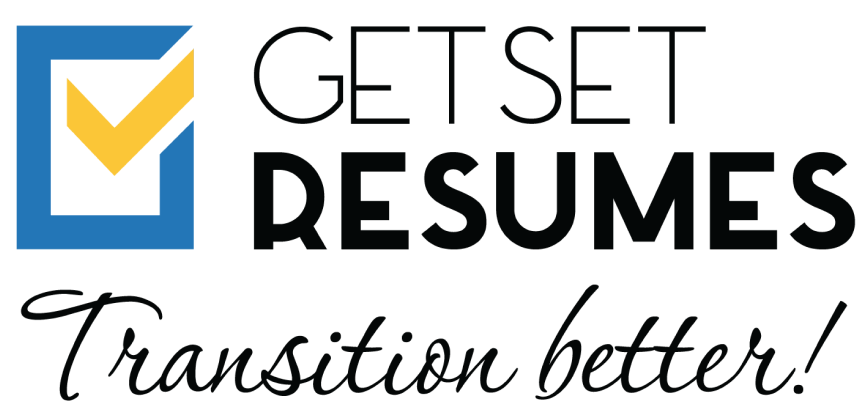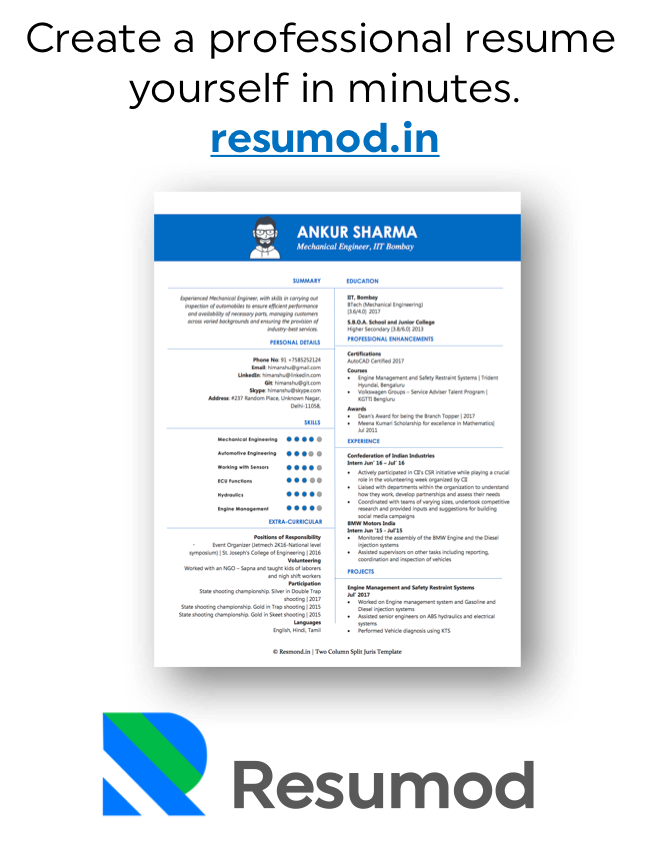Executive hiring is a proactive process and it is seldom accomplished through the traditional hiring approach. You will rarely find an executive-level job posting making its way into an advertisement. Therefore, sending out copies of a thoughtfully developed resume across your network will not work; even a supporting document like a cover letter might not do the job for you. To provide a big picture of your career and journey, you need an Executive Biography.
Check out some Samples Below.
[1] Executive Biography of Information Security Professional
[2] Executive Biography of Customer Service Leader
[3] Executive Biography of Scholar, Academician, Researcher
[4] Executive Biography of Sports Management Professional
What is a bio?
An executive biography is a descriptive document, primarily conveying the value you bring to the table. It is an amalgamation of your achievements, core skills, and recent professional engagements, all cohesively put together in form of a narrative. To summarize, it is an account of your professional oeuvre.
Executive biography, as the name suggests is primarily used by executives to lay an overview of their career. Resume and Cover letters, on the other hand, are used by all professionals throughout their careers.
The purpose:
The purpose of the executive bio is different from other documents, so is the audience. The audience is not limited to recruiters or industry veterans, as the executive biography is often used as an “introductory” or “about me” document. Most commonly, the bio is used as a networking tool.
- As an introductory document: Executives are often invited to conferences, seminars, and knowledge-building sessions. Here the bio comes in handy as it just gives the right amount of information and conveys your expertise to fellow attendees.
- As a Networking tool: Days of sending resumes or introductory emails are gone behind. A bio is a smart tool that will help you have an edge over others. Your LinkedIn profile might not seem attractive in a big pool of competitors, but a well-crafted bio will surely make a mark.
What goes in and how?
Apart from filtering the information that goes in the bio, it is integral that you set the right tone. To make your bio an impactful and engaging, focus on:
- Creativity and Clarity: Tone is one of the key aspects of communication. Storytelling abilities, displayed here, will play a major role in developing greater networks. This is the document where you can be creative with describing your core competencies. How creative yet clear you are about your career and achievements, will help you convey your vision and thought leadership.
- Content and Structure: The structure and content go hand in hand. To define a structure for your bio gather your credentials, experience, any measurable results (the content). Be mindful while picking up examples and focus on facts and evidence.
- Length: The length of the bio depends on the two factors, the content you wish to push in and the purpose. Generally, executive biographies are up to 500 words long. However, if you are using it as an “About me” document, 200-300 words would yield better results.
Where to use the bio:
- On your company’s website in the leadership section
- As an “about section” in interviews and publishing(s)
- Attached with pitches to prospective customers
- As evidence of the company’s expertise at industry events of branding press releases.
How to compliment the biography:
A bio is a stand-alone document, It comes in handy as a complimentary one only if you are looking for a job. Here are few aa tips that will fast-track the hiring process.
- Maintain consistency: Consistency goes a long way in establishing your credibility. Ensure your Resume, Cover Letter, LinkedIn Profile, and Bio say the same story, only in different ways. Be sure of your goals before you pen down your documents and then maintain consistency. Apart from a similar message, you can use a uniform colour scheme, font style, etc.
- Approach the market: Make sure your bio does not seem like your resume and is driven by purpose, make alterations, and evolve. For instance, as a jobseeker, focus on your recent achievements, expertise, and some facts. For networking, a more summarized version of your career along with recent events, conferences, etc. will work better.
- Adopt a personalized approach: Apart from creating a thoughtful tale of your career and achievements, consider adding your worldview of the industry, the dynamic market, or hint towards a probable solution to the prevailing issue.
To see one of our long-form sample biographies, check out our samples page.
Following are some more Sample Biographies for a read and review.
Sample Executive Bio of an Information Security Professional
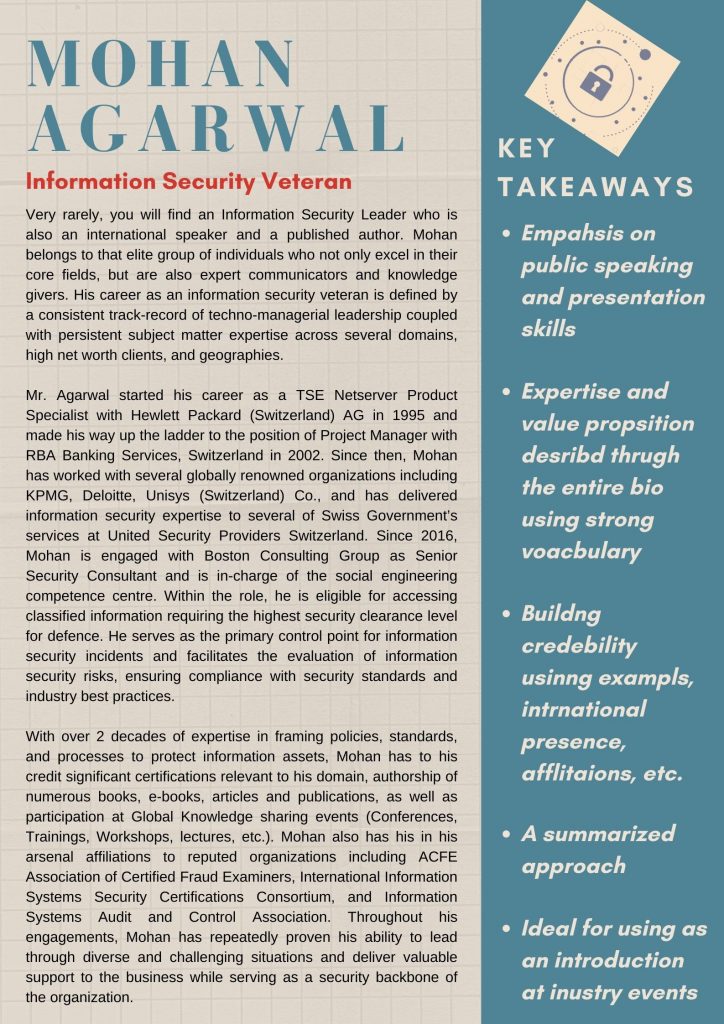
Sample Executive Bio of a Customer Service Leader
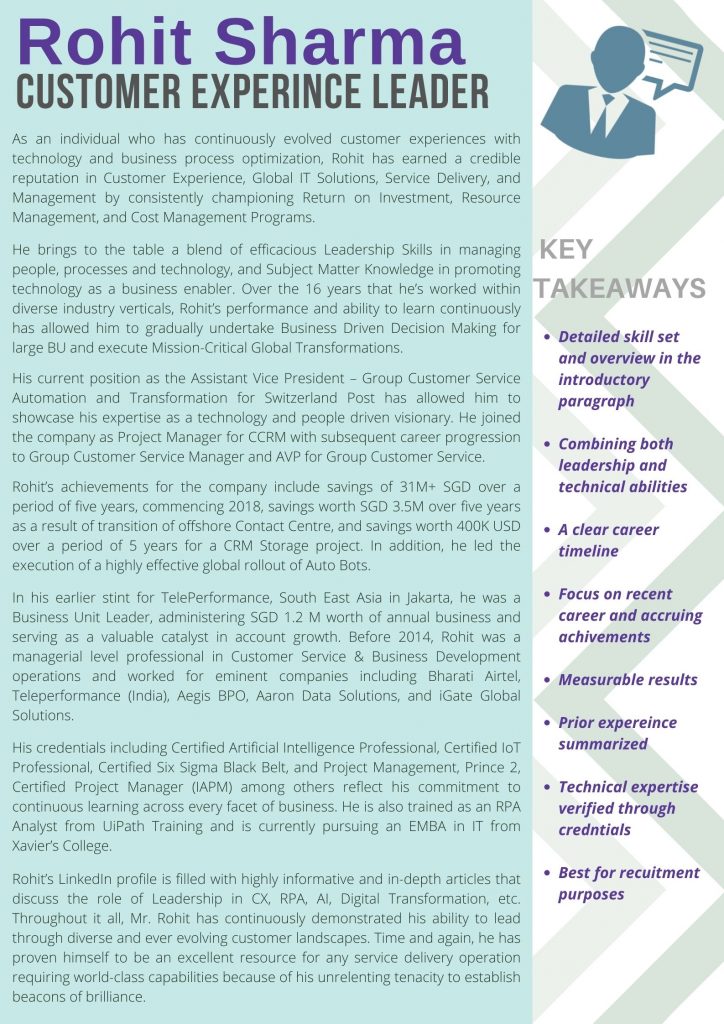
Sample Executive Bio of an Academician, Scholar & Researcher
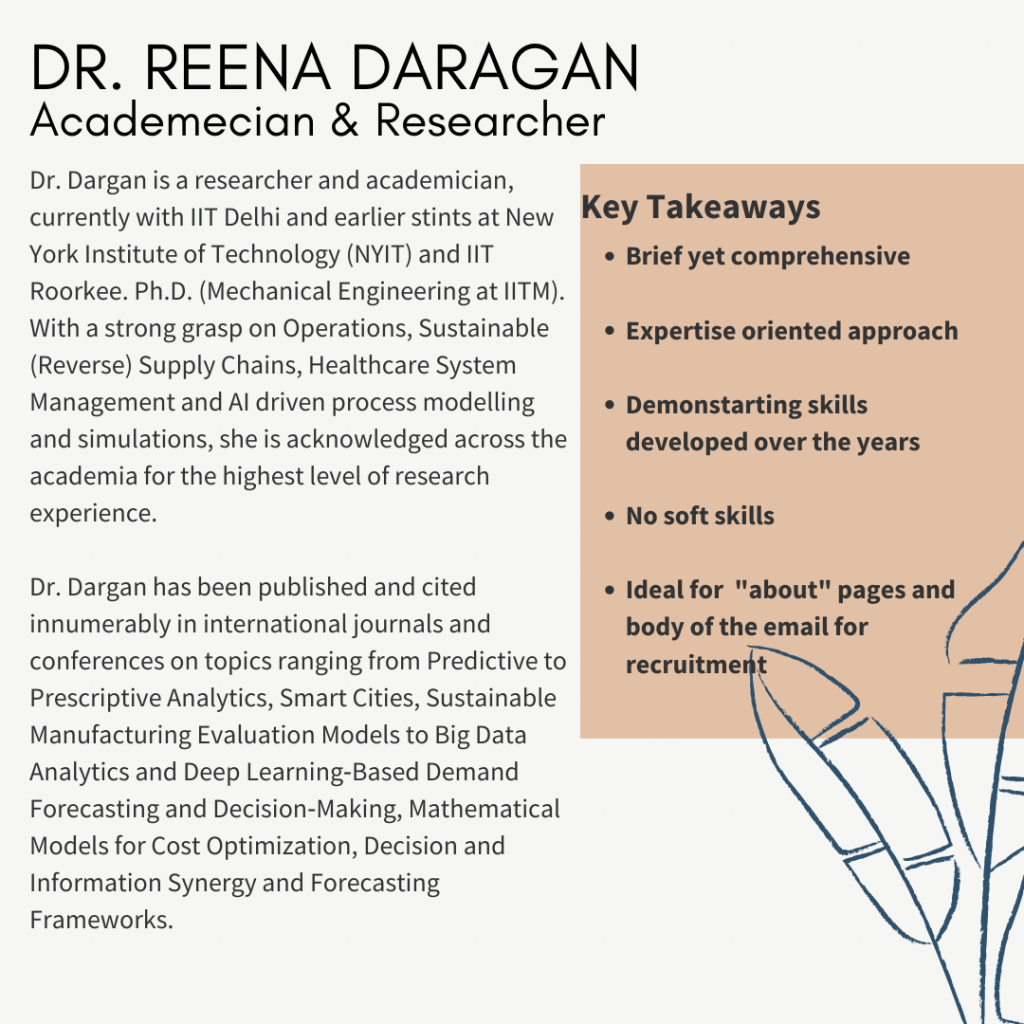
Sample Executive Bio of a Sports Management Professional
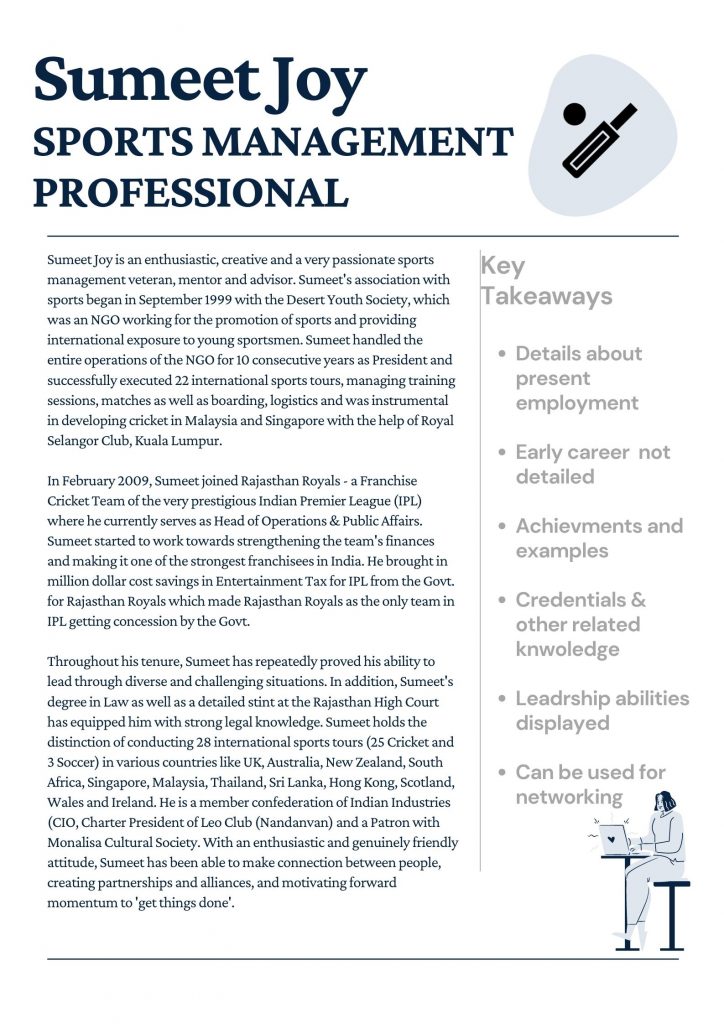
We hope this article was insightful and you liked it.
